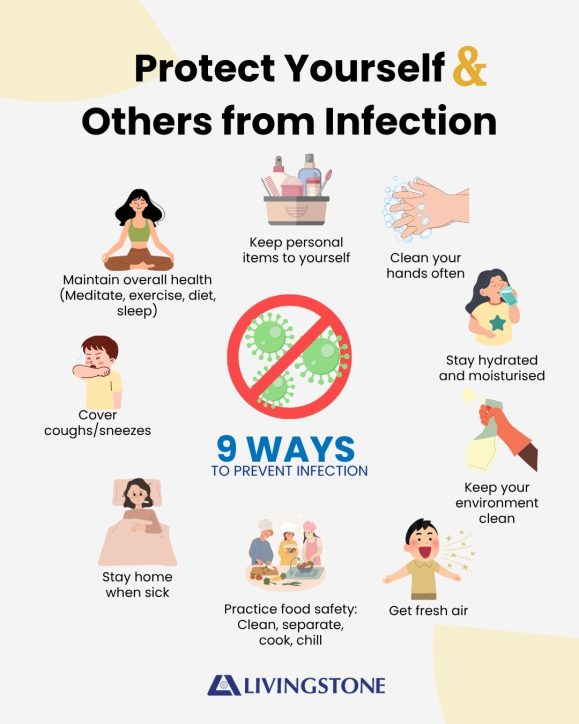Every year, an estimated 170,000 Australians acquire a healthcare-associated infection (HAI) while receiving care in hospitals and other health settings (AIHW, 2025). These infections are largely preventable, yet they remain a major cause of prolonged hospital stays, higher treatment costs, and patient harm. Infection Prevention Week 2025 is an opportunity for every healthcare facility to refocus on the systems, practices, and behaviours that protect patients, staff, and the wider community.
Building Prevention into Daily Practice
Effective infection prevention depends on people, systems, and culture working together. It is not a once-a-year audit or policy update but a continuous commitment to safe care.
Identifying and Understanding Risk
Every facility faces unique infection risks based on its services and environment. Ongoing surveillance helps detect early warning signs before problems spread.
- Track device-associated and surgical site infections and share results with clinical teams.
- Conduct cleaning audits to verify that high-touch surfaces and shared equipment are disinfected correctly.
- Record near-miss reports to uncover workflow barriers that may compromise safety.
A Queensland Health review found that consistent surveillance programs can reduce infection rates by up to 50 percent (Queensland Health, 2025). Risk identification should therefore guide all infection control activities, from cleaning frequency to patient flow management.
Protecting Patients and the Workforce
Hand hygiene remains the foundation of infection control. Australia’s public hospitals currently report 86 percent hand hygiene compliance, exceeding the national benchmark (AIHW, 2024). Ensuring alcohol-based hand rub is accessible at every point of care, along with visible reminders and observation feedback, keeps compliance high.

Environmental cleaning cannot be overlooked. High-touch areas such as door handles, rails, and equipment surfaces require frequent disinfection using approved products. Cleaning teams should receive regular training and recognition as key contributors to infection prevention.
Safe waste disposal, appropriate use of personal protective equipment (PPE), and prompt reporting of hazards all form part of a facility’s protection strategy. Together, these everyday actions create a safer care environment for everyone.
Containing and Controlling the Spread
Once an infection risk is identified, fast containment is essential. Standard precautions, such as hand hygiene and correct PPE use, apply to all patient interactions. Transmission-based precautions, such as contact, droplet, or airborne measures, must be implemented when necessary.
Early isolation of patients with suspected infections prevents wider transmission. Reusable medical devices must be cleaned, disinfected, and sterilised according to Australian standards, with clear documentation to track each step. Even a small lapse in this chain can cause a facility-wide outbreak.
Facilities should also prepare response plans for emerging threats. Mock drills and staff refresher training ensure teams know how to act when an infection cluster occurs. Preparedness turns reaction into prevention.
Why It Matters
When infection prevention is embedded in daily operations, the benefits extend far beyond reduced infection numbers.
- Better patient outcomes: Fewer infections mean shorter recoveries, fewer complications, and safer hospital experiences.
- Lower healthcare costs: Each avoided infection saves resources tied to longer stays and additional treatments.
- Healthier workforce: Protecting staff reduces absenteeism and maintains service continuity.
- Reduced antimicrobial resistance: Preventing infections limits unnecessary antibiotic use and helps slow resistance trends.
The Australian Commission on Safety and Quality in Health Care reports that national bloodstream infection rates have fallen to 0.75 cases per 10,000 patient days, one of the lowest in the world (ACSQHC, 2025). This progress shows that prevention works when supported by leadership and data-driven practice.
The Consequences of Inaction
Ignoring infection prevention undermines patient safety and system resilience. A single preventable infection can result in severe illness, extended hospitalisation, or death. Facilities that overlook cleaning or sterilisation protocols risk outbreaks, bed closures, reputational damage, and financial loss.
Lapses also contribute to antimicrobial resistance, increasing the burden on Australia’s health system. In aged care, community health, and home-care settings, where patients are often more vulnerable, the impact of poor infection control can be devastating.
Infection prevention is therefore both an ethical and operational priority. Every gap in compliance can have lasting effects on patients, staff, and public trust.
Infection Prevention Week 2025 reminds Australia’s health community that prevention must be part of everyday care. The core actions remain simple: maintain clean hands, clean environments, safe equipment, and informed staff. What matters is doing them consistently, supported by data and leadership.
By using this week to review policies, strengthen education, and celebrate best practice, facilities can continue to build safer, more resilient systems. Prevention is not a one-time campaign; it is the foundation of quality healthcare.
For practical resources and toolkits, visit:
- Australian Commission on Safety and Quality in Health Care (ACSQHC)
- Australasian College for Infection Prevention and Control (ACIPC)
References
- Australian Commission on Safety and Quality in Health Care (ACSQHC) 2025, Infection Prevention and Control Week 2025, Australian Commission on Safety and Quality in Health Care, viewed 20 October 2025, https://www.safetyandquality.gov.au/our-work/infection-prevention-and-control/infection-prevention-and-control-week
- Australian Commission on Safety and Quality in Health Care (ACSQHC) 2025, Healthcare-Associated Infection Program, Australian Commission on Safety and Quality in Health Care, viewed 20 October 2025, https://www.safetyandquality.gov.au/our-work/healthcare-associated-infection-program
- Australian Institute of Health and Welfare (AIHW) 2024, Hospital Safety and Quality: Hand Hygiene and Staphylococcus aureus Bloodstream Infections, Australian Government, viewed 20 October 2025, https://www.aihw.gov.au/hospitals/topics/admitted-patient-safety-and-quality/hand-hygiene
- Queensland Health 2025, Infection Prevention and Control Guidelines for Healthcare Facilities, Queensland Government, viewed 20 October 2025, https://www.health.qld.gov.au/__data/assets/pdf_file/0026/150956/qh-gdl-321-7-1.pdf
- Russo, P.L., Shaban, R.Z., MacBeth, D., Bull, R., Macleod, M. & Mitchell, B.G. 2022, ‘Burden of healthcare-associated infection in Australia: A systematic review and meta-analysis’, Antimicrobial Resistance and Infection Control, vol. 11, no. 23, pp. 1–11, viewed 20 October 2025, https://aricjournal.biomedcentral.com/articles/10.1186/s13756-022-01109-8
